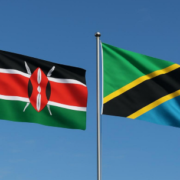Eswatini’s Central Bank opens CBDC Platform to Fintechs for Digital Payment Innovation
The Central Bank of Eswatini (CBE) is taking a groundbreaking approach to the adoption of Central Bank Digital Currency (CBDC) by partnering with the private sector to enhance its acceptance and distribution. In collaboration with Giesecke+Devrient’s (G+D) Filia solution, CBE has opened its CBDC platform to fintech companies, allowing them to test and integrate new digital payment services. This move aims to advance the digital Lilangeni initiative, with Instacash leading the way by enabling mobile payment transactions via feature phones.
RELATED: Survey reveals emerging market consumers ready to use CBDCs
Instacash Leads the Way in Digital Lilangeni Integration
Instacash, a local provider of mobile electronic money transfer services, capitalized on this opportunity to conduct the first payment transactions using the digital Lilangeni through a basic mobile phone. Utilizing the Filia platform’s tools and documentation, Instacash developed a proof-of-concept (PoC) application that integrates the digital Lilangeni into its existing financial services without requiring special developments or support from G+D.
The new solution allows users to open a digital wallet, check balances, access financial services, and transfer funds using USSD or GSM codes on standard keypad phones. This innovation leverages existing mobile technology to deliver affordable and accessible digital financial services to a population where nearly half lack smartphones.
Promoting Financial Inclusion and Innovation
The initiative aligns with Eswatini’s efforts to drive financial inclusion by extending digital payment capabilities to underserved populations. The use of well-established, cost-effective mobile technology offers a practical solution for providing digital financial services in regions with limited smartphone penetration.
Dr. Raoul Herborg, Managing Director of the CBDC unit at G+D, emphasized the transformative potential of CBDCs in the payments industry. “Instacash’s initiative demonstrates the enormous potential that Central Bank Digital Currencies can unlock for payment players,” he stated. “It serves as an excellent example of customer-centric collaboration between Central Banks and private digital currency providers, enhancing financial inclusion by integrating CBDCs into existing financial services.”
Africa’s Role as a Pioneer in CBDC Development
The African continent is at the forefront of CBDC exploration, with countries like Ghana and Eswatini actively developing and testing digital currencies. Eswatini’s digital Lilangeni has already been introduced to the public at the Eswatini International Trade Fair, with plans for a larger rollout as part of a national pilot program. The CBE’s collaboration with fintechs aims to create a robust ecosystem for digital payments, stimulating innovation in the financial sector.
Looking Forward: Expanding CBDC Use in Eswatini
The success of the Instacash PoC highlights the potential for CBDCs to drive financial inclusion by providing easy access to digital financial services, even without smartphones. As the digital Lilangeni initiative progresses, the Central Bank of Eswatini and its partners aim to further expand digital payment options, making financial services accessible to a broader segment of the population.
By promoting the integration of CBDCs into the local economy, Eswatini is setting a benchmark for other countries aiming to leverage digital currencies for economic growth and financial inclusion.





























